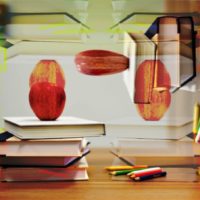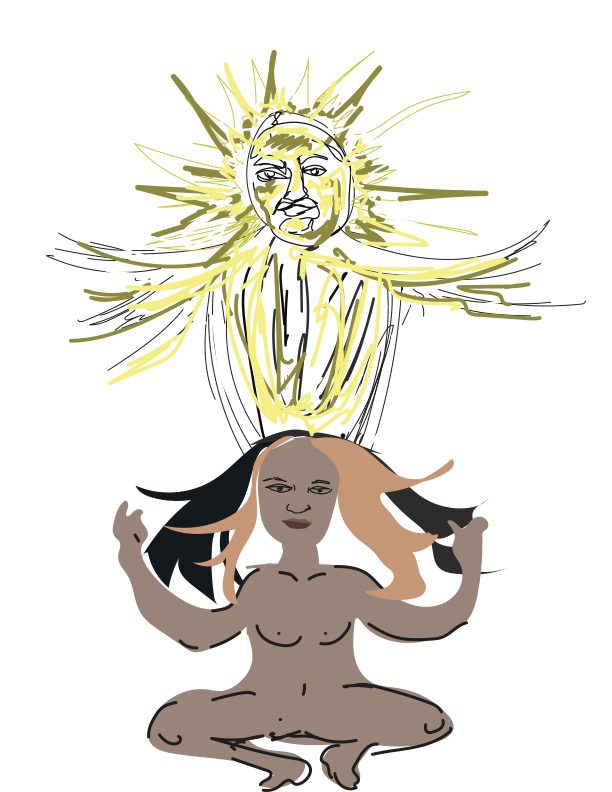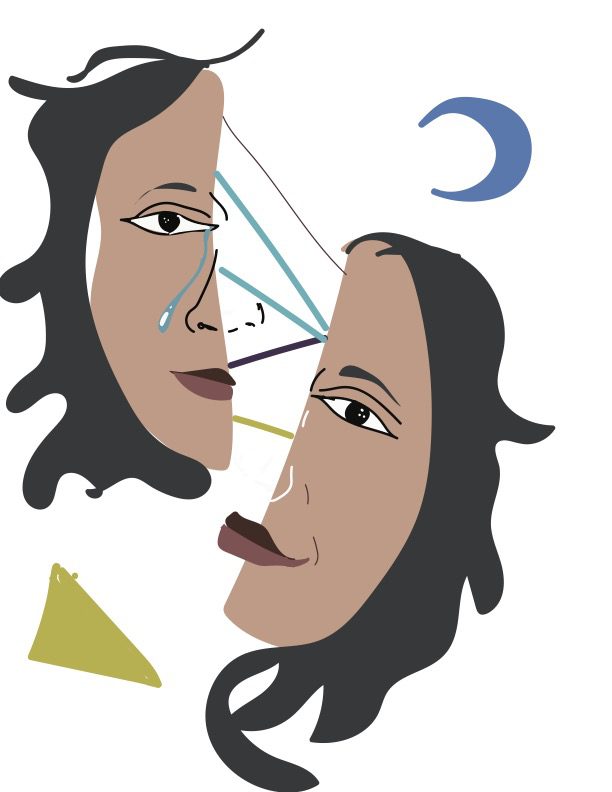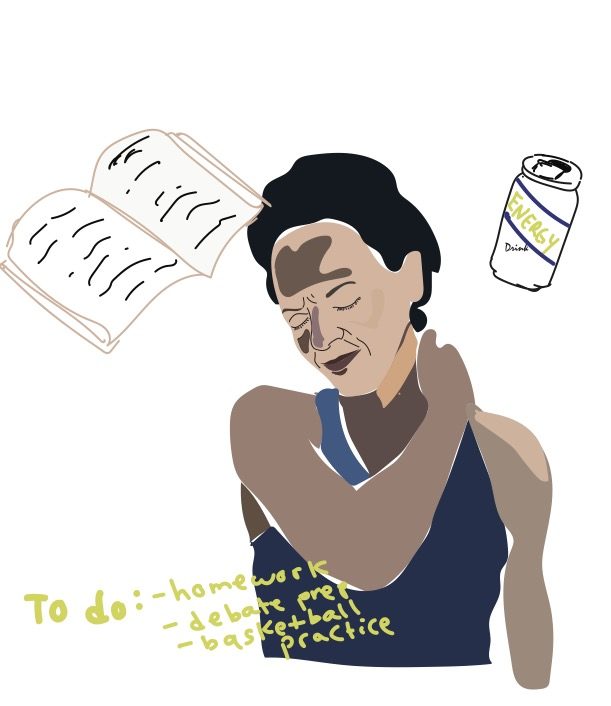My mother’s teachings come up from the ground the way a buried seed knows its route to the sun. She and I would make our way along the riverbank—half walking, half wading—the mid-summer heat bearing down on us as we rummaged through rushes and swamp willow.
“The water ran fast here,” she said standing on a swath gravel, a place where the current dropped only its heaviest cargo. A flood had receded just days before, leaving fields of crownbeard and Queen Anne’s lace streaked with silt. Puddles still soldiered on here and there, collecting fringes of algae and tornados of gnats. Before long they would be bowls of mud, their surfaces baked into smooth, dusty shards. Every time I knelt to the dirt, I smelled not the sweet, crisp scents of a summer meadow, but the richer, deeper scents of the river—wet, brown, growing, clean. We traced the patterns it left on the land, looking for the slow places where the current eddied, relinquishing its most buoyant gifts.
“Look at this!” I said, pulling an amber apothecary bottle from a ripple of mud.
Mom nodded, her gaze already downstream, moving toward a ditch where a culvert released its contents into the river. A tree trunk lay wedged into it, its branches extending like a sieve into the water.
“Annie, over here!” she said, but I was already following. Caught between the trunk and the bank lay a tangled nest of treasures: driftwood hooked with old tires and lengths of rope, Mountain Dew bottles wedged among wooden staves and muddy sedge. We started rifling through it, pulling out anything that held a glint of promise under its layer of muck. We took our loot down to a sandbar to wash and sort.
“What you got?” she asked.
I handed her a carved wooden swirl the size of a dinner plate. A bit of whitewash still clung to one corner.
“Looks like scrollwork off a porch,” she said flipping it over, “or maybe a very old banister. This one was chewed by a beaver.” She handed me an oak branch hashed with straight, even gouges where the river steward had shaped it for his lodge.
The afternoon wore on: both of us crouched with our sneakers in the dirt, handing each other bits of wood, glass, or stone we’d bring home to adorn our bookshelves and bedroom walls. She’d run her fingers over each, explaining the rocks tumbled smooth by the current, the wood spalted by fungus into beautiful patterns, the shard of iridescent brick fired in a local factory miles upstream. “This one had a strangler vine,” she said of a long branch curving tight like a spiral staircase. “The wood had to grow around it.” I nodded and set it down with the other finds brought to us by the water.
She’d learned the language of rivers on long walks with her older brother, Bradley. They’d buy penny candy or Slip Jims at the general store then head out to the woods. The hills around their home lay veined with rivers—the Maries and Little Maries, the Osage and Missouri—and any hike eventually led to currents that swelled and abated with the seasons, leaving readable marks in silt and fishbones on the bank.
Those summers he was home from seminary school where he was earning top grades on his way to the priesthood, a parent’s dream in a German Catholic town. He was the still the golden child then, the handsome first-born son with wide brown eyes and long fingers made for picking the chords of a Simon and Garfunkle tune. The two of them would wander the banks telling stories from his life away from home and hers within it, seeing how the water rearranged the land, absorbing an intuitive understanding of current and sediment she would later pass to me.
“Annie,” she said, “See how the river isn’t all one thing. You can tell the current is moving faster by the opposite bank, slower over here.” I’d nod and dip one hand in its cool flow, gauging its press against my skin as it hurried to the sea.
We’d haul our chosen treasures to the copse of trees separating the river from the town, stashing them behind some dogberry or arrowwood where we could find them later. All that summer the bank became our private trove, a weave of water and alluvium, hidden things and found ones we traced with fingers and careful, knowing steps.
If my mother’s teachings looked up from the ground, the ones at school looked down from above. Maps showed blue lines for cold fronts above the Dakotas, red lines for tectonic plate boundaries in California, dashed lines for World War I battalions. I was supposed to explain what the lines meant on the ground: downpours and dropping temperatures, earthquakes and volcanoes, the impending fall of France. I was good at this, the trick of decoding the earth as if peering down from a satellite. I was good at learning the symbols that meant supply chains, ocean tides, or trade routes. School became puzzle, a game I could always win. I held tight to those victories, because as I grew up from childhood, my certainty about the world and myself within it were beginning to crumple.
My teenage years had opened onto feelings I couldn’t explain. I was often deeply, desperately lonely despite a loving family and a shifting cadre of friends that built and subsided like summer storms. The loneliness sharpened any threat of rejection to a cutting edge so normal social missteps—calling a new friend the wrong name, telling a bland joke while waiting for the bus—felt as dangerous as a sword swallowing act. The fear became so common with me that after a while I didn’t need such triggers to tumble into it. Like water sliding down a slope, my brain would start picturing the worst things it could imagine—my boyfriend kissing someone else in a sunlit kitchen, my father wrecking his car after a late night at work, a faceless man forcing the lock on my nights home alone. None of these things had ever happened, or come close to happening, yet thoughts of them would catch me up like a net pulling me under. Sometimes I imagined shoving my hand heel-first through a window, the sound of shattering glass slicing through the thoughts I didn’t want but couldn’t stop.
“I’m worried I’m like Bradley,” I told Mom one night in the dark of my bedroom. He’d died when I was five, but I’d learned just that year that he’d suffered from bi-polar disorder, that he’d killed himself by slitting his wrists then jumping off a cliff. It had not been his first attempt, not even his third.
Mom stilled when I said his name, looking down at my night-sky comforter then back at me. The moon shone full through the branches of the pin oak rising above the house, the traffic of the nearby highway shushing like water. “If I saw any sign of that, Annie” she said, “I would tell you.” Her green eyes glowed gray in the dark, and for a moment they held me. She was right of course. What I was experiencing looked nothing like the erratic swings of her brother’s illness. “People like Bradley get really, really happy for a while,” she said, “Or angry. Then they get really, really sad. Then happy again.” She paused. “You aren’t like that.”
I nodded. I knew she was right, that the slow coming apart inside me bore little resemblance to her brother’s cycles. But to me “like Bradley” didn’t mean a particular diagnosis so much as a line dividing “normal” from something else. My friends at school didn’t gasp audibly when an embarrassing memory—dropping their tray in the lunch line, answering a question wrong in math class—leapt unbidden from their neurons. They didn’t repeat a set of stock phrases (“I’m just so tired,” “I had a crazy dream last night”) to fill up any silence that lasted more than a few seconds. My brain, I was beginning to realize, worked differently from other people’s. “Bradley” had become synonymous with that difference and with the fate I feared it sealed me to.
But I was still too afraid to look at that difference head-on, so I held Mom’s words before me like a shield. In her book, Borderlands/La Frontera, Gloria Anzaldúa writes about the ways the mind resists truths it’s not ready for. “In order to escape the threat of fear or shame,” she says, “one takes on a compulsive, repetitious activity to busy oneself, to distract oneself, to keep the awareness at bay.” This addiction, she says, can be anything, from the ones our culture imagines—drugs, eating, exercise—to ones it doesn’t. No matter what the obsession is, the mind ties it like a blindfold to avoid seeing truths it would rather avoid. “I don’t want to know, I don’t want to be seen,” Anzaldúa writes. “I feel myself closing, hiding, holding myself together rather than allowing myself to fall apart.”
That year I spent twelve hours on homework a week. By high school I was up to twenty. I did every math problem assigned (sometimes twice). I read every book (often twice). I wrote my to-do lists in fifteen-minute increments. I gave myself Friday nights “off.”
I knew my peers weren’t doing the same. They skipped and fudged assignments but still made good grades, sometimes better than mine. All the evidence suggested I could do less without calling down disaster, but every theorem I proved and sentence I diagramed felt like another stitch holding my world together. Sitting at my desk, I’d watch my classmates joke and jostle comfortably with each other while my brain rippled with a vague, clamoring fear that welled from nowhere. Like Bradley, I thought then pushed it away, turned to my textbooks where I stacked chemistry problems and history essays like sandbags against the coming flood.
Psychologists use “dissociation” as an umbrella term for the garden-variety “spacing out” most of us do as well as the “black outs” some people experience. The brain detaches from the body when a task is uninteresting, uncomfortable, stressful, or traumatizing. In an immediate sense this is helpful. We can plan the week’s meals while putting away the dishes or imagine beach vacations while the dentist scrapes our molars. In more extreme situations, dissociating protects us from pain and our own stress hormones flooding our system. As psychologist Peter A. Levine puts it, dissociation is one way our bodies “deal with the scenario in which we must defend ourselves, but cannot.” It helps keep the body’s generated stress “disconnected from the fullness of experience.” It shields us from pain and terror.
I didn’t know how to defend myself against my anxiety, so at school I learned to detach my consciousness from the adrenaline it sent flaring through my bloodstream. Sitting at a small metal desk welded to its small wooden chair, I could float away into quadratic equations and poetic allegory. I could slip free of my body and my fear. Friends would tease that I’d often sit through class, my face completely slack, my eyelids pulled back into my head as I rubbed my lower lip with one index finger. I didn’t realize I was doing it. Sometimes the skin split and my mouth bled. Sometimes I forgot to eat because my body’s signals of “hungry” “thirsty” “cold” couldn’t cross the distance I’d put between myself and my feelings. When I detached from my anxiety, it turned out, my other senses went with it.
And so I perfected looking at the world from above, even above myself. My science classes taught me words like hypothesis and control group, isolated variable and non-falsifiable. These words bracketed the known from the unknown, fact from speculation. While my brain harried me with imaginary threats, my textbooks offered scenarios with safe, predictable answers—a rock is falling through a vacuum at 34 meters pe second; assuming Earth’s gravity, how long has it been falling? Answer: 3.5 seconds. Never mind that most falling rocks aren’t falling through a vacuum, aren’t perfectly aerodynamic, and often hit things on their way down. The world on the page was free of such caprice, free of the sidelong looks when I repeated someone else’s jokes with vastly different results, free of the stress hormones pulsing through my system without rhyme or reason. On the page, consistent actions yielded consistent outcomes. On the page, things made sense. I floated free into that perfect, imaginary world, and my teachers applauded my obsessive focus. School had become a haven for my dissociated self.
“I want my pain to be quantifiable,” I wrote over and over again in my journals through my early twenties. The sentence became a litany, a rebuke, an angrily shouted prayer. As I’d hidden myself through high school to college, from college to graduate school, the anxiety racketing through my body grew, like a message desperate to be delivered. I often cried on my way to campus. I struggled to keep up with my work because, on bad weeks, I fell asleep whenever I read more than a few pages. I never drank too much because after the third beer, I’d feel the sobs rising in my throat and bolt for home. Often, I got only four or five hours of sleep a night.
When the anxiety overwhelmed me, I’d walk out of my apartment to the tree-lined streets stretching east from campus. I made their trunks and branches into names—hackberry, sweet gum, red oak, sugar maple—a mantra of the known and governable buttressing the sinkholes in my thoughts. Sometimes I played a game: I imagined a simple x-y axis in which every human on Earth was labelled across the bottom. The measure of their life’s suffering defined the height of their dot on the graph above. The dots were arranged in ascending order with the most lavish, pain-free lives coming first, followed by a dreary parade marching forever upward. I thought that if I could plot myself on that graph, see how my desperate flailings measured up, I could finally understand who I was. If only I could make myself one data point among many, I thought, I could deliver myself from anxiety into certainty. Sometimes I imagined Bradley on my graph, his dot to the left of mine and higher up, but how much left and how much higher, I was never sure.
“I know I have anxiety,” I told a friend one afternoon as we sat at our favorite sushi restaurant. “But I want to know how much of this I would be feeling without it.” I looked out the tinted, plate-glass window to hide the tears building in my eyes. My friend looked at me with a strange blend of severity and concern. “Do you think that’s how it works?” he asked gently, his green eyes unbearably soft.
“No,” I groaned. But that’s exactly what I thought. I imagined my feelings as liquid in a beaker, a line clearly marking “normal” on its glass side. I wanted to know how much of me was excess, how much I needed to do away with. “In trying to be ‘objective,’” Anzaldúa writes, “Western culture made ‘objects’ of things and people when it distanced itself from them, thereby losing ‘touch’ with them. This dichotomy is the root of all violence.” I set my chin in my sleeve-covered hands to hide and blot the tears on my cheeks.
In striving to see myself from above, I’d become an object even to myself. I would have to learn slowly, reaching my fingers inch by inch back into my own soil, that I couldn’t heal myself from without. As the poet Mary Oliver once wrote, “Knowledge has entertained me, and it has shaped me, and it has failed me. Something in me still starves.”
***
This kind of knowledge was all I’d been taught, at least, all I’d been taught in school. In his book Waking the Tiger, Levine uses the phrase “the felt-sense” to describe all our ways of knowing that slip quietly alongside conscious thought. It includes our sensory perception of our environment, the sensations inside our bodies, and the near automatic reactions we have to both: comfort, pain, tension, relief. This way of knowing is multi-dimensional, non-linear, and highly responsive to the world around it. “In many ways, the felt sense is like a stream moving through an ever-changing landscape,” Levine writes. “When the land is rugged and steep, the stream moves with vigor and energy, swirling and bubbling as it crashes over rocks and debris. Out on the plains, the stream meanders so slowly that one might wonder whether it is moving at all.”
My mother is an expert of rivers in flood. She’s seen the Missouri rise so high it filled the entire valley from Atchison, Kansas to Armour, Missouri, four miles away. She’s seen railroads where the water ripped away the gravel embankment beneath the crossties, the tracks suspended six feet in the air. She’s seen rivers strong enough to carry away homes.
Once on their summer hikes, she and Brad walked along the top of the levee separating one corn field from another. Both lay along a curve of the Maries River, and the men had piled gravel and earth ten feet high between them so that when the upper field flooded, the water drained along the mound back into the river. The lower field would stay dry, only half the crop lost. She sucked on root beer barrels as they sauntered along in the bright sun. Where the levee reached the river, they stopped.
“Holy cow,” Brad said, pointing down. Below them, five enormous cars glinted up from the water, the wide, round bumpers of Fords and Chevys gathering algae and rust. Over the years, the floods channeled by the levee had worn a deep hole in the riverbed and destabilized the bank. The farmers put the cars in neutral and rolling them into the hole. “At the time I was just so amazed that you could fit that many cars down there,” Mom told me as she remembered that afternoon. “They were big cars too. The farmers wanted to keep the bank from giving way.”
It would be another three years before the dean sent Brad home unexpectedly from college, his suitcase full of clothes cut to pieces, a wild look overtaken his eyes. Another eight years before his first stint in the psych ward. Two decades before his death. That day she stood beside her brother—their eyes wide and fingers sticky with candy—staring down at the farmer’s desperate bid to hold back the flood.
These days, I walk down to the river running through the town I’ve made mine. The water’s on the rise. First, it swallows the milkweed and coreopsis growing along the bank, then laps the sidewalks running alongside, then the grassy slopes leading to the library, the student center, the shiny new theater. I drive to the park where a broad curve slows the water enough to drop driftwood and table legs, paper plates and cable reels, once a rusted clawfoot tub. My felt sense so often rages like a river in flood, but it took more than a decade before I approached it with curiosity rather than a desire to measure and control. Again and again, I waded in with my yard stick, aghast that I was swept away. Better to build a sturdy boat. Better to learn the current as well as its leavings.
In her book Pain Woman Takes Your Keys, Sonya Huber writes about learning to live with rheumatoid arthritis. “I see it as part of my job of being in pain,” she says, “to let the pain itself come into focus, to pay attention to it, so its strands and colors become distinct and, therefore, less overwhelming. I am a kind of park ranger of pain.” There are times when my anxiety feels like a slow falling through, when the ground or my own pelvis comes apart beneath me as I flounder to my knees. At other times, the anxiety contracts, like a cold front pulling into itself before a storm. My muscles clench, and I hold my breath. When I feel the first, I know to find a soft mattress in a cold, dark room, to sink into rest until my ground reforms. When the second comes, I push back, fling a line across my constricting boundaries—babe, I’m not good, I’m just not doing good—then pull myself hand over hand, dragging my edges with me.
Perhaps it’s not the purview of school to teach this kind of watching (it’s old hat now that most Western education remains stranded to one side of the Cartesian divide), but in lieu of other ways of knowing, the ones I was taught rushed to fill the space. It’s hard not to pity the girl who tried to isolate the variables of her life, who wanted a control group for her existence. What other tools did she have? None but those latent in her long walks by the river.
When I return home to Ohio, my mother and I still go down to the bank. “See how the current seems to disappear,” she says as we watch the waterfall beside the old mill. “As it flows down the rock it actually goes down beneath the surface, then swirls around the plunge pool before it comes up on the other side. People who don’t know that see just a little waterfall.” She pauses. “People drown there every year.”
Gulls and cliff swallows wheel through the spray. A heron stalks the reeds, his legs scissoring beneath him as he holds his head steady, eyeing the shallows. Science and all its distance helps us know ourselves in aggregate, as a city, state, demographic, planet. We need data to undergird our medicines and inform our laws. But this place reminds me that some things can only be learned through proximity and patience.
When the weather permits, I walk with my students down to the water. “I’ll stop at four or five different points,” I tell them. “It will take about an hour so you can stick with me or move at your own pace. Stop at places that speak to you. Write down what you feel or whatever comes to mind.” They scattered across the grass with their notebooks and laptops. One wanders up to the bridge and leans on the railing. Another perches on a boulder beneath an old sycamore. A red-winged blackbird chatters from the opposite bank. I choose a limestone block set into the current, its surface bare inches above the skin of the river. The humidity off the water lingers in my sinuses, telling stories of ragweed lifting its head and last year’s leaves receding into murk. When I look upstream, I can almost imagine I’m sitting on the river itself, feeling its coolness push gently about my sternum. The current carries the sunset toward me, carries me toward what I already knew.
***
Rumpus original art by Isis Davis-Marks







